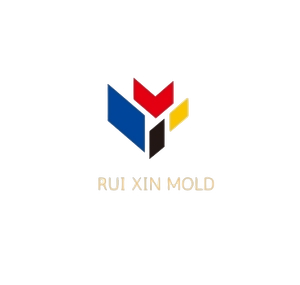Recent Posts
Tags

Plastic Injection Mould
A plastic injection mould is a precision-engineered tool used in the injection molding process to produce plastic parts. It consists of two primary halves: the core and cavity, which form the desired shape when molten plastic is injected under pressure. These moulds are widely used in industries such as automotive, electronics, medical devices, and consumer goods due to their ability to mass-produce complex and high-quality plastic components efficiently.




Production Details
Design and Development:
- CAD Modeling: The mould design is created based on part specifications and tolerances.
- Flow Simulation: Ensures optimal flow of molten plastic and minimizes defects like warping or sink marks.
Manufacturing Process:
- Material Selection: Tool steel or hardened steel is typically chosen for durability.
- CNC Machining: Shapes the mould cavity, core, and other features to high precision.
- EDM/Wire EDM: Used for intricate details, sharp edges, and tight tolerances.
- Polishing and Surface Texturing: Ensures smooth or textured finishes based on the product’s requirements.
- Assembly and Testing: The mould is assembled, tested, and fine-tuned to ensure perfect fit and functionality.
Types of Moulds:
- Single-Cavity Mould: Produces one part per cycle, ideal for small-batch production.
- Multi-Cavity Mould: Produces multiple parts in a single cycle, improving efficiency.
- Family Mould: Creates different parts in a single cycle.
- Two-Shot Mould: Facilitates overmolding by injecting two materials in sequence.

Materials
- Tool Steel (P20, H13): Offers good durability and wear resistance for standard molds.
- Stainless Steel (S136): Excellent for corrosion resistance and high-polish requirements.
- Beryllium Copper: Used for inserts requiring excellent thermal conductivity.
- Aluminum: Lightweight and suitable for prototype or low-volume production molds.

- Lifters are commonly used in industries such as automotive, electronics, and consumer products where complex part geometries require advanced molding solutions.
- Automotive Parts: Handles features like clips, undercuts, or snap-fit geometries.
Consumer Goods: Used in molds for products with intricate details or aesthetic finishes.
Medical Devices: Assists in producing precision components with complex features.
Electronics: Ejects thin-walled parts or housings with side cores and details.

Features
- Durability: Designed to withstand high pressure and repeated cycles.
- Precision: Ensures accurate replication of complex geometries and fine details.
- Customization: Tailored to the specific product design and production needs.
- Efficiency: Capable of producing millions of identical parts with minimal waste.
- Scalability: Suitable for both low-volume prototyping and high-volume mass production.

- .Dongguan Ruixin Precision Mold Company specializes in manufacturing high-quality injection mold components, including Mold Cavities, Mold Sliders, Mold Inserts, Mold Lifters, Guide Bushings, and more. With years of expertise, we deliver precision-engineered solutions tailored to meet the demands of modern industrial and manufacturing applications. Our commitment to quality, innovation, and customer satisfaction ensures that every component we produce enhances efficiency and product performance. Trusted by clients worldwide, we pride ourselves on reliability and attention to detail, making us a preferred partner in the precision mold industry
China CNC Precision Machining Factory
- At RUIXIN Precision Mold Company, we understand that every project has unique quality requirements. That’s why we offer a range of inspection services to ensure your parts meet the highest standards of precision and performance. Our inspection services can be tailored to your project’s needs—giving you the flexibility and confidence you deserve.

- Our Inspection Services:
1.Standard Inspection
2. Standard Inspection with Dimensional Report
3. CMM Inspection with Dimensional Report
4. First Article Inspection Report (per AS9102)
5.Source Inspection
6.Additive Part Inspections - Custom Inspection
If your project demands specific inspection requirements, we’ve got you covered. Our Custom Inspection option allows for additional services such as: - Non-destructive testing
Serialization
Custom sampling plans
Use of your provided inspection datasheets
At RUIXIN, your quality standards are our priority. We’re committed to delivering accurate, reliable inspection results that align with your project requirements.
How long does it take to manufacture a plastic injection mould?
What factors affect mould cost?
What is the lifespan of a plastic injection mould?
Can one mould produce different parts?
What are common defects in injection moulding, and how are they addressed?
Advantages and Challenges of CNC Machining

CNC milling and turning are highly accurate and repeatable processes. Tight tolerances between +/-0.001″ – 0.005″ can be achieved, depending on specifications. Machines can be programmed to reliably run for 24 hours, 7 days a week if necessary, so CNC milling is a good way of getting parts produced on demand.
Using standard tooling, a CNC machining service is particularly valuable for creating one-off parts, custom CNC parts, i.e., for replacing legacy components or delivering a specialized upgrade to a customer. It is also conceivable to scale single-part production to runs exceeding 10,000 units. Depending on the unit number, size, and complexity, the turnaround for CNC machined parts can be as short as one day. With shipping and delivery, deadlines can be met within a week.
One trade-off when taking advantage of the high performance of CNC machining processes is that geometric complexity comes at a cost. Simple, chunky parts are the best designs for CNC milling and turning. There will always be some design limitations due to tool access, although the degree of this effect is relative to the number of axes on the machine. In other words, the more axes used, the more complex the features can be achieved.
Another trade-off is that start-up CNC machining costs can be expensive. It is necessary to have a trained professional perform the setup, tool loading, and programming on CNC mills and lathes. Luckily this cost is fixed, so by taking advantage of the same setup for multiple parts, it becomes more economical. Saving money is also achieved by keeping part repositioning to a minimum. Machining at 5-axis and above can sometimes be more economical on multi-faceted geometries because it eliminates the need to manually reposition the part.





